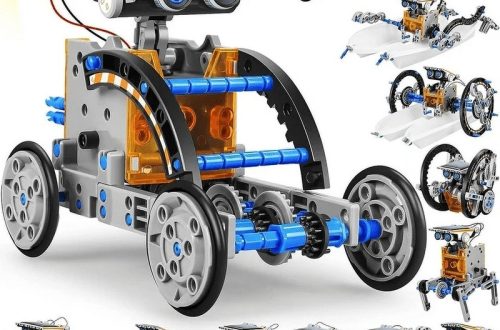Drones have revolutionized various industries, from filmmaking and photography to search and rescue operations. But for potential drone buyers and enthusiasts, understanding a drone’s range and performance can be perplexing. This article dives into the world of drone range and performance, exploring the key factors that influence how far and how well a drone flies.
Part 1: Unveiling Range – How Far Can a Drone Fly?

Battery Life is King:
The range of a drone is primarily dependent on its battery life. Drones are powered by batteries, and the duration a battery can sustain flight directly correlates to the drone’s operational range. The size, weight, and capacity of the battery are pivotal factors in determining the range that a drone can achieve. Larger and heavier batteries with higher capacities can provide the drone with a longer flight time, enabling it to cover greater distances compared to drones equipped with smaller, lighter batteries. The energy density and power storage capabilities of the battery are critical as they directly impact the duration and range a drone can attain during its flight. As a result, the choice of battery plays a crucial role in defining a drone’s operational capabilities, influencing the extent to which it can traverse and operate within different distances and environments.
Energy Efficiency Matters:
In addition to battery life, a drone’s design and overall efficiency are pivotal factors that influence its range. An aerodynamically optimized design, featuring sleek shapes that minimize drag, coupled with efficient motors that consume less power, can significantly enhance a drone’s ability to cover greater distances on a single battery charge. These design elements contribute to reducing energy wastage, allowing the drone to travel farther and maintain longer flight times, ultimately leading to an extended operational range. Conversely, a bulky design with powerful but less efficient motors might provide impressive speed, but it could compromise the drone’s flight time and overall range. Therefore, achieving a balance between power consumption, aerodynamic design, and motor efficiency is essential for maximizing a drone’s range potential.

Part 2: Flight Performance – Beyond Just Distance
Flight Time vs. Range:
It is crucial to make a clear distinction between flight time and range when discussing drone capabilities. Flight time pertains to the total duration that a drone can remain airborne on a single battery charge, regardless of its direction or location. This crucial metric directly impacts the operational endurance of the drone, influencing its ability to conduct prolonged aerial missions or cover significant distances within a specific time frame. In contrast, range specifically denotes the maximum distance a drone can travel in a single direction before necessitating a recharge. Understanding this distinction is essential for accurately assessing a drone’s capabilities and limitations. While flight time relates to the duration of operation, range is a key indicator of the drone’s geographic coverage and endurance in terms of spatial distance.
Weather Conditions as a Wildcard:
Environmental factors significantly impact drone performance. Strong winds can rapidly deplete battery life, reducing both flight time and range. Extreme temperatures can also affect battery performance, with colder temperatures leading to shorter flight times. Always consider weather conditions when planning your drone flights.

Part 3: Choosing the Right Drone – Matching Needs with Performance
Purpose Defines Performance Needs:
The optimal range and performance of a drone are contingent upon its intended use. For instance, a racing drone might prioritize speed, agility, and rapid acceleration over extended range, as quick maneuverability and responsiveness are crucial in competitive racing environments. Conversely, a drone utilized for aerial photography or videography would greatly benefit from longer flight times, enhanced stability, and the ability to cover significant distances to capture diverse perspectives and scenes. Identifying the primary purpose for using a drone serves as a guiding principle for striking the right balance between range and performance. By aligning the drone’s capabilities with the specific requirements of its intended application, users can effectively tailor the range, flight time, and overall performance to meet their unique operational needs.
Payload Matters:
The weight a drone can carry, also known as its payload capacity, significantly impacts its range. When a drone carries a heavier payload, it requires more power to maintain altitude and maneuver, which consequently leads to a shorter flight time and reduced operational range. When considering the weight of any additional equipment such as cameras, sensors, or other gear that you intend to use with the drone, it is essential to account for the potential impact on the overall performance and endurance of the drone. Assessing the payload capacity of the drone and factoring in the weight of the intended equipment is crucial for ensuring that the drone can effectively and efficiently fulfill its intended tasks while maintaining the necessary flight time and operational range.

Part 4: Understanding Regulations – Flying Within the Limits
Know Your Airspace:
Drone regulations can differ significantly based on geographic location. It’s crucial to familiarize yourself with the specific airspace restrictions and guidelines applicable to your area. Certain regions may impose designated no-fly zones, altitude limitations, or other airspace restrictions for drones, particularly in proximity to airports, populated areas, or critical infrastructure. Adhering to these regulations is essential for ensuring safety and compliance with legal requirements. By staying informed about the applicable airspace rules and limitations, drone operators can responsibly navigate within the legal boundaries, thereby mitigating safety risks and demonstrating respect for the regulatory framework. Prior to flying a drone, it is imperative to thoroughly research and understand the local and national regulations governing drone operation in the chosen area. Embracing a proactive and conscientious approach to drone operation supports safe and responsible flying practices, while also fostering greater awareness and understanding of the legal parameters that govern drone usage.
Safety First:

Before operating your drone, ensure you understand safe flying practices. Maintain a visual line of sight with your drone, avoid flying near people or crowded areas, and be aware of your surroundings. Prioritize safety for yourself, others, and property when flying your drone.
By understanding the factors that influence drone range and performance, you can make informed decisions when choosing a drone and ensure your flights are successful. Remember, the ideal drone balances range, performance, and your specific needs. Fly responsibly, prioritize safety, and explore the exciting world of drone technology!


